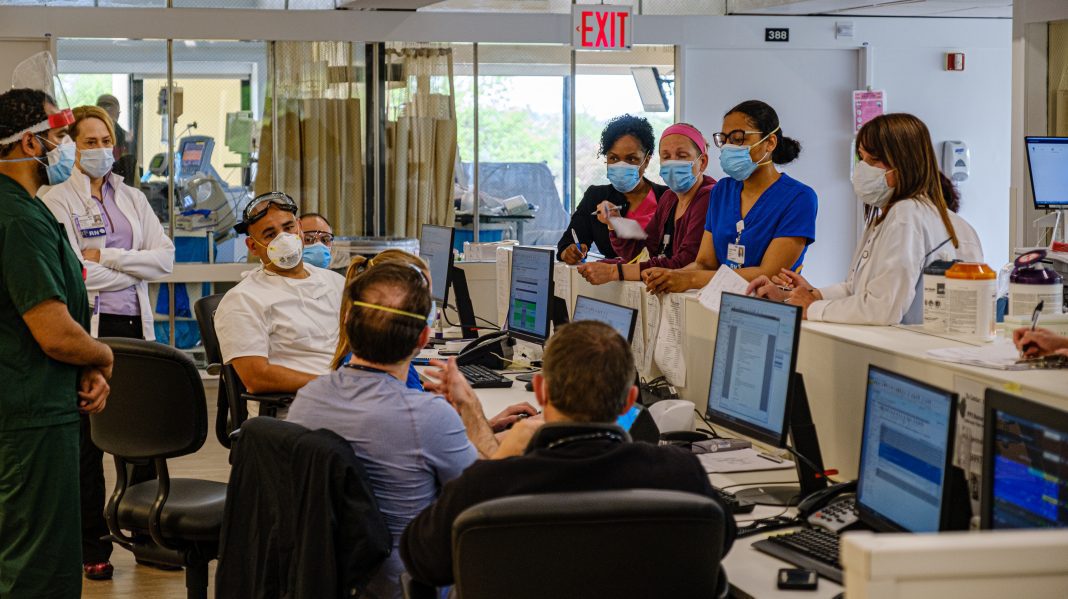September 30, 2020
Northwell Health today announced that it has developed a first-of-its-kind predictive tool that can anticipate a spike in coronavirus disease 2019 (COVID-19) cases at its hospitals by mining user data patterns from its Northwell.edu website. With the pandemic still raging worldwide, Northwell plans to give away the source code to other health systems.
Northwell Health reports the two-week advance warning system was created this summer by the customer insights group in collaboration with information technology and clinical teams in the wake of the COVID-19 surge that struck New York State’s largest health system last spring. Northwell Health treated nearly 85,000 COVID-19 patients, including 16,000 hospitalized patients between March and Labor Day – more than any health system in the United States.
Northwell’s new digital dashboard collects 15 different indicators from the Northwell.edu website and feeds them into a machine-learning algorithm to recognize patterns in website traffic, which includes everything from emergency department wait time searches to physician page clicks. The result is a rolling two-week forecast that has closely mirrored caseload to date and is expected to help clinical teams prepare for future surges.
“You’re feeling sick, start doing the research online, but you aren’t so ill that you need to see a doctor immediately,” said Ramon Soto, senior vice president and chief marketing and communications officer for Northwell Health. “We found a very strong relationship with website activity to in-facility COVID-19 patients two weeks later. This is an important development in the fight against COVID-19 and Northwell wants to share this game-changing tool with the world.”
These Northwell.edu indicators – which are anonymized for privacy – create a composite characteristic of each day’s web traffic, which translates into the “public mood” of the website. The COVID-19 prediction algorithm dashboard launched at the beginning of September and joined a number of other innovative systems that Northwell uses to track the number of patients and types of symptoms that go through the health system.
Northwell’s predictive model works because of the traffic volume of its website – more than 20 million page views since the first week of March – coupled with the geographic concentration of its 19 hospitals, 800 outpatient facilities, and 52 urgent care centers across New York City, Long Island and Westchester. Its numbers have been fact-checked and correlate closely with the number of cases seen systemwide.
“COVID-19 has really pushed us forward in the usage of real-time data,” said Eric Cruzen, MD, chief medical informatics officer of the Emergency Medicine Service Line at Northwell Health and chairman of the Emergency Department at Lenox Health Greenwich Village in Manhattan. “I worry most about an uptick in viral syndrome presentation in our emergency departments, from fevers to low oxygen levels. We see those numbers in real-time. I also pay attention to laboratory testing and because our health system is so large we can draw real conclusions from the data. But we have to be proactive instead of reactive. This new dashboard is predictive and it is amazing. We use every day to keep our finger on the pulse of the community.”
Being able to anticipate the next COVID-19 surge has huge implications for staffing, supplies, patient handling as well as making room for the expected influx of cases. Northwell made massive investments in protective gear, life-saving equipment, testing and physical expansion of facilities as the first wave hit in the spring. Taking those lessons and plugging in the ability to see another wave coming could flatten the curve before it becomes a wave.
For health systems interested in learning more about Northwell’s COVID-19 prediction algorithm, visit https://github.com/northwell-health/covid-web-data-predictor
